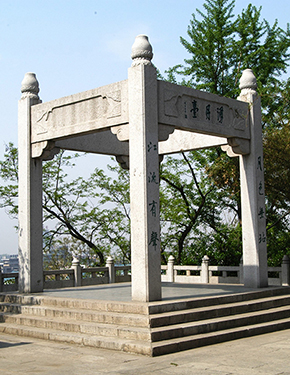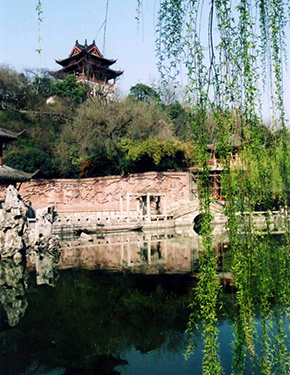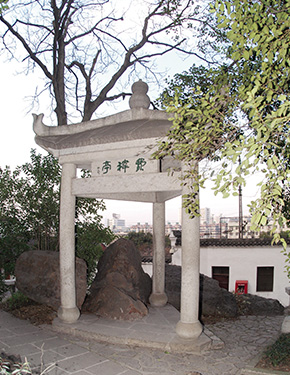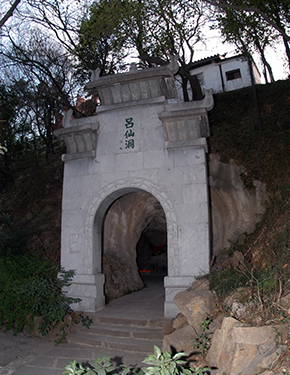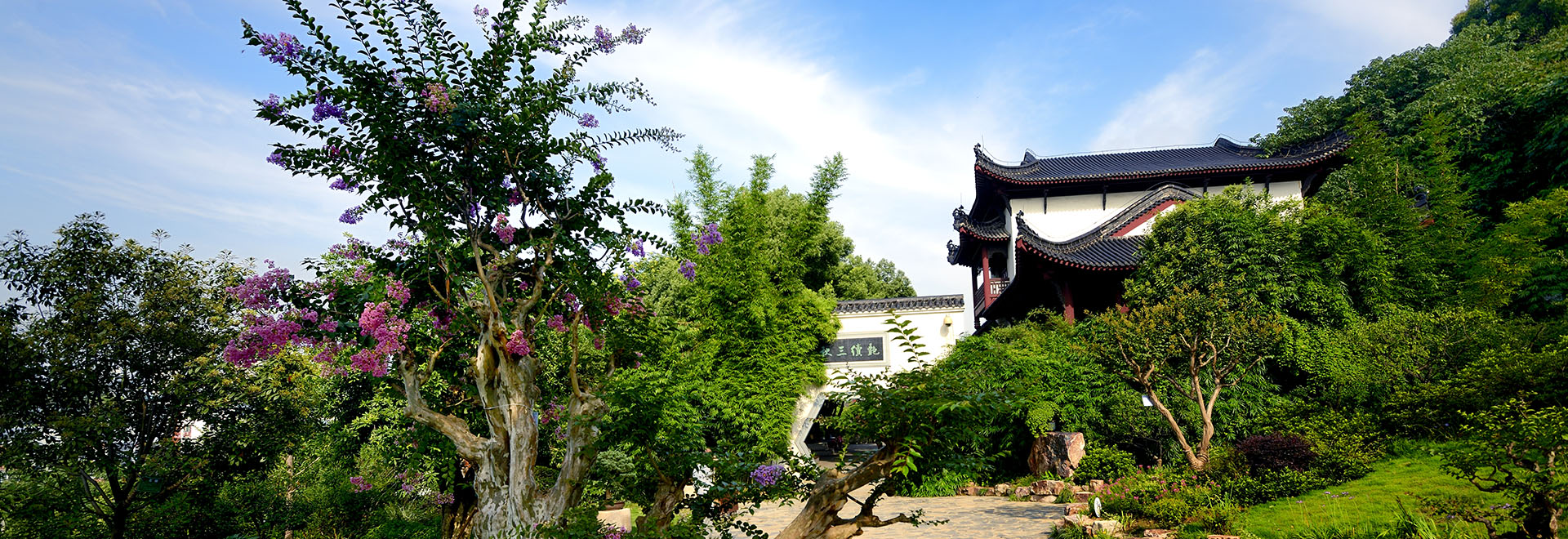
Return of Ninety Nine Cranes in Relief
- Nomal
- Enlarge
- Reduce
The relief stretches 240 m southeast of Yellow Crane Tower and 85m southwest of White Cloud Pavilion. It adjoins White Dragon Pond of the tower park. As the largest outdoor granite relief, this all-red artwork takes on a vivid look. With a closer look, you can see ninety nine cranes. Why was this number used? Because these plus the crane ridden by the immortal are 100. The original Yellow Crane Tower was ruined in Tongzhi Period 100 years before the completion of its modern counterpart. Two 100 stand for a propitious meaning—“Huang He Bai Nian Gui (Return of Yellow Crane 100 Years Later).” Gui He (Return of the Crane) is sculptor Liu Kaiqu’s inscription.
The 4.8-m-high relief sprawls zigzag for 38.4 m on Snake Mountain. So, small wonder the total coverage and weight are 184.32 m2 and 240 ton or so respectively. In construction, 343 garnet granites, each featuring 80 cm length and width and 30 cm thickness, had been used. The artwork carves out a vibrant realm in which the sun and the moon shine together above the endless waves of the river. Each crane, be it perching, dancing, singing, playing or flying, comes alive indeed. All these cranes are scattered amidst pines, bamboos, mume blossoms, tinder agarics, flowing waters, rocks and clouds. They are various gestures of the returning crane.
Carving the relief started in 1987 and ended 4 years later. Zhao Shutong, Ren Yibo and Mao Huijian, all professors at Sichuan Carving Art College, undertook design and construction. Specifically, they each worked out a distinct sketch in light of the spot requirements. Finally, Ren Yibo’s solution was adopted. Then the professors carved it with rigid cellular plastics on a more than 180 m2 rigid board at 1:1 scale for the sake of best artistry. To make the relief resistant to weathering, all the garnet granites are excavated from a mountain higher than 4,800 m in Xide County, Liangshan Yi Autonomous Prefecture, Sichuan. Such stones are therefore called “Xide Red.” They are even harder than alloy steel. So, the carving project consumed much time and effort. Just the consumption of drilling alloy steel amounted to more than 3 ton. Various techniques such as high relief, low relief and openwork were employed during the construction. In particular, each crane’s head and neck feature openwork carving. Yet other sights were carved no less deep than 10 cm. As a tint, garnet may vary with weather conditions: bright like a red lotus in a clear day, yet mild like a begonia in the rain or thick cloud. In this way, the entire artwork looks majestic yet poetic silhouetted against the setting sun.

Tourist Service
- consulting hotline
Service hotline: 027-88875096
Supervision hotline: 027-88848188
027-12301
(Wuhan Tourism Bureau.)
027-87124701
(Hubei Tourism Administration)
- Official qr code.
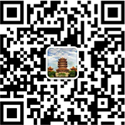
Scan focuses on the yellow crane tower.
- Online consultant
- Complaint and advice

